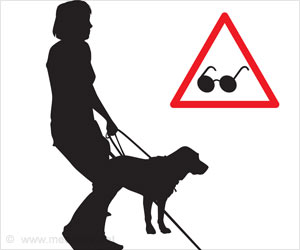Improved Imaging Techniques were used to study the changes that occur in the brains of individuals born blind.
- Scientists from Massachusetts Eye and Ear Institute used MRI imaging to study changes in the brains of people who were born blind.
- There were structural and functional changes, with enhanced communication between certain regions of the brain.
- These changes lead to improved faculties, for better interaction with the environment.
Imaging the Brain
The research team utilized both the diffusion based and resting state MRI multimodal brain imaging techniques to identify changes that occur in the brains of 12 subjects, who were born blind or who became blind before the age of 3 years. These scans were then compared with the brains of 16 normal sighted age matched subjects.The study found that among those who showed signs of early blindness
- There were changes in the structural and functional connectivity
- There were signs of enhancement in connectivity
- There was transmission of signals, back and forth, in the regions of the brain that were not observed in people with normal sight
- Certain connections that were identified in the brain imaging studies were unique among people with blindness
The research team believes that this study could be used to enhance the experience of visually challenged individuals, providing them with the right kind of support, by understanding their strengths. The study findings can be used for effective rehabilitation, which will help improve other associated faculties, compensating for the loss of visual information.
Dr. Lotfi Merabet, who is the senior author of the study and the Director of Schepens Eye Research Institute of Mass. Eye and Ear’s Laboratory for Visual Neuroplasticity, said that according to the study, there are changes in the brain which aid in utilizing the information gathered in a more effective manner even when the subjects were profoundly blind. Dr. Merabet, who is also an associate professor of ophthalmology at Harvard Medical School, said that the study brings to the fore the ability of the brain to rewire itself. When the brain can rewire itself, then improved training could enhance hearing, language skills and the ability to feel and improve aspects like braille reading.
The study provides evidence that the brain has the ability to adapt to the environmental changes and that, through proper training other faculties can be enhanced in every individual.
Re-organization after Sensory Loss
The senior author of the study, Dr. Lotfi Merabet, and his colleague Dr. Alvaro Pascual-Leone, have been studying the remarkable ability of the brain to re-organize itself after sensory loss for many years, and have published a study in 2010 titled “Neural Reorganization Following Sensory Loss: The Opportunity Of Change”.The research delves into the changes that occur when the individual is blind or deaf. Just like in people who are blind, the study showed that there were other senses, among the deaf, which were intact and aided in interaction with the environment. The study provided examples of enhanced sensory stimulation among the deaf, which include
- The ability to use visual or tactile stimuli to alert attention
- Interactions using visual-spatial methods of linguistic communication like the use of sign language
- Superior ability in certain tasks compared to control subjects who can hear
- Improved visual ability compared to controls, especially in identifying emotional expression
- Being better at carrying out tasks that involve peripheral vision; this could be an adaptive phenomenon
- Superior ability in detection of visual motion
- Neural Reorganization Following Sensory Loss: The Opportunity Of Change - (https://www.ncbi.nlm.nih.gov/pmc/articles/PMC3898172/)
















